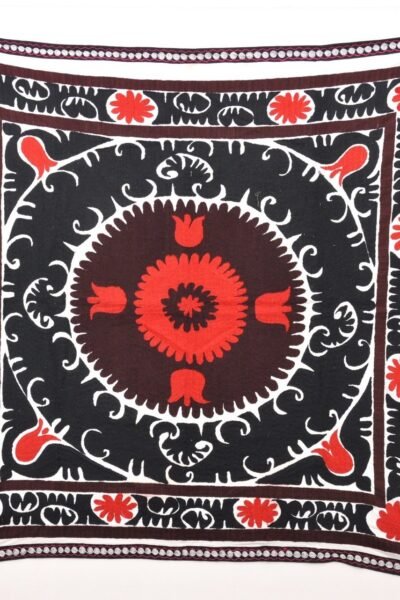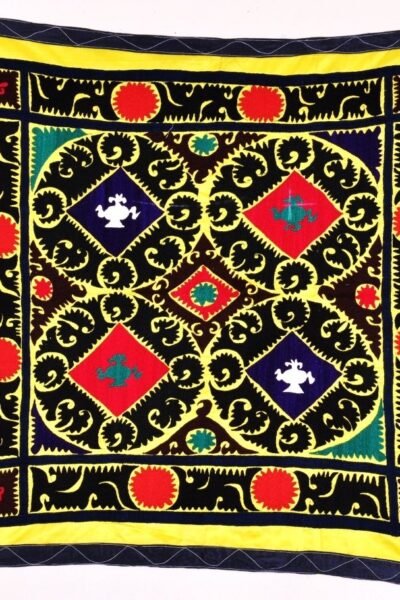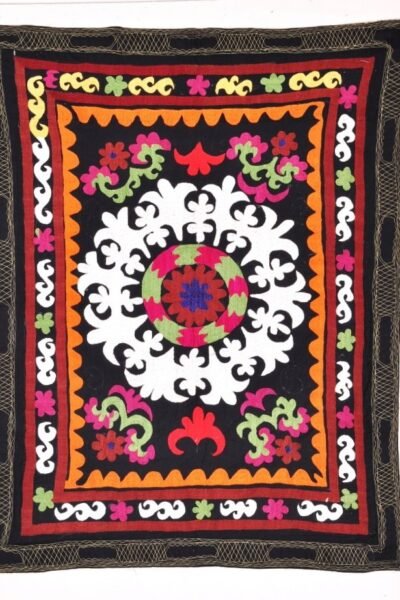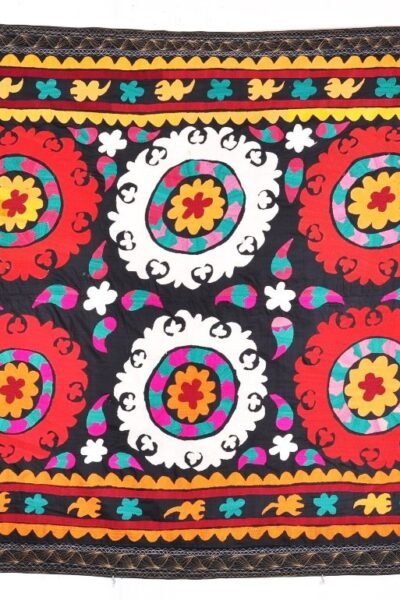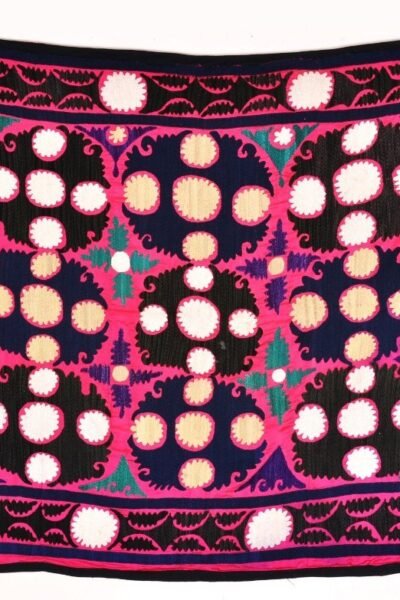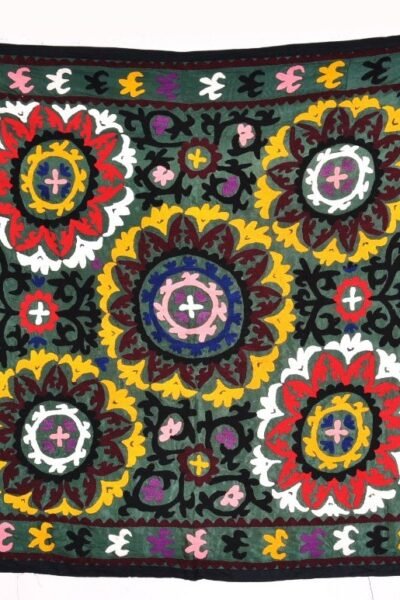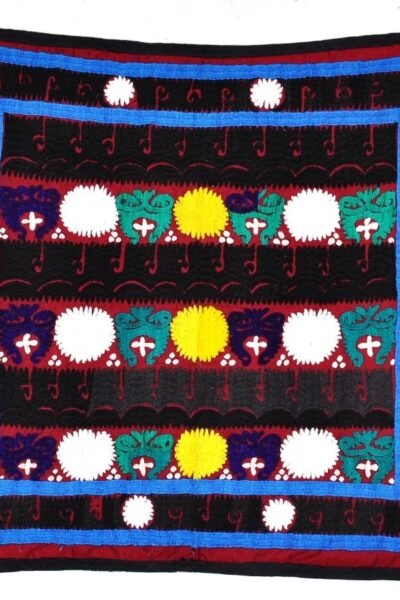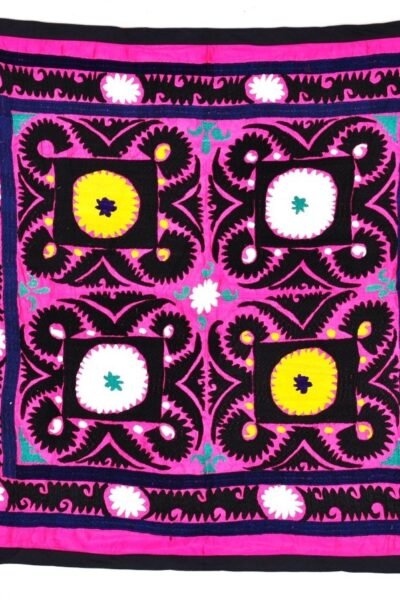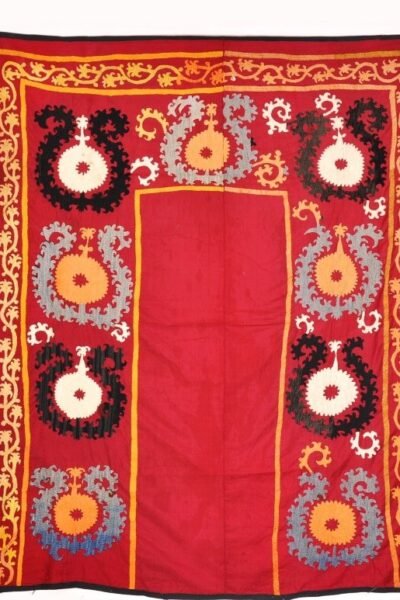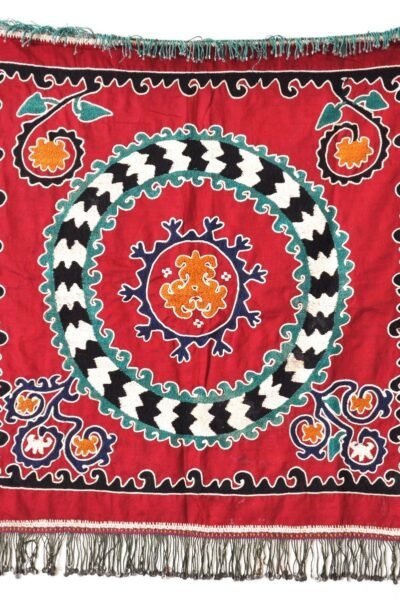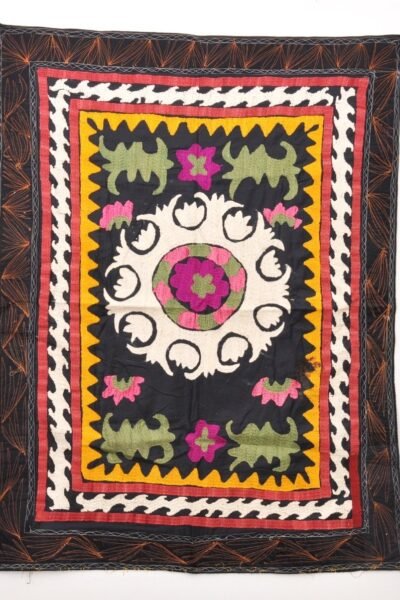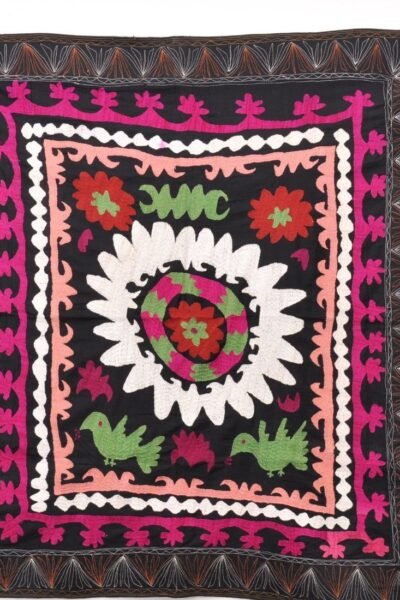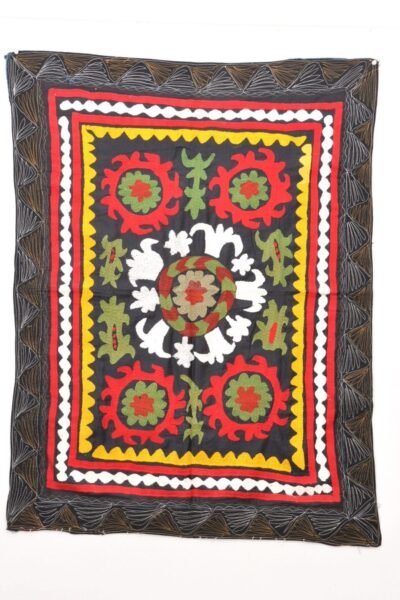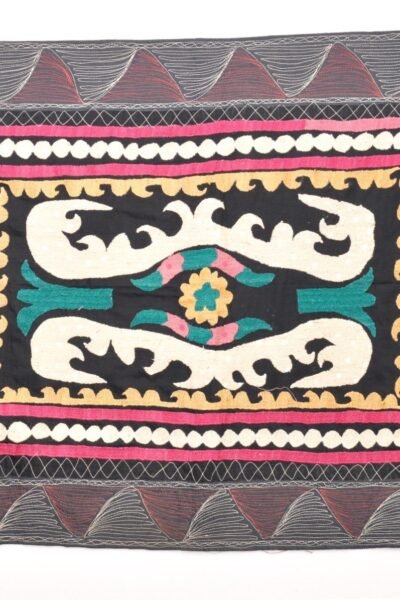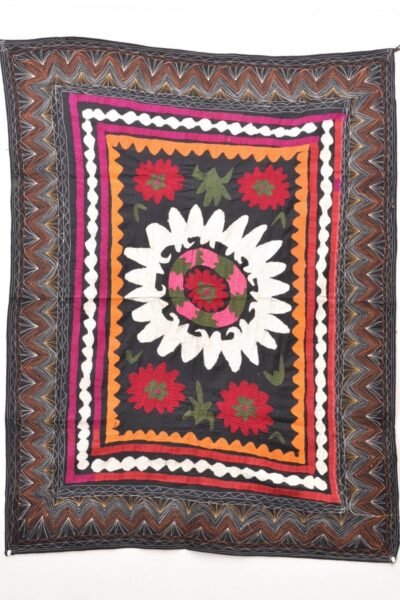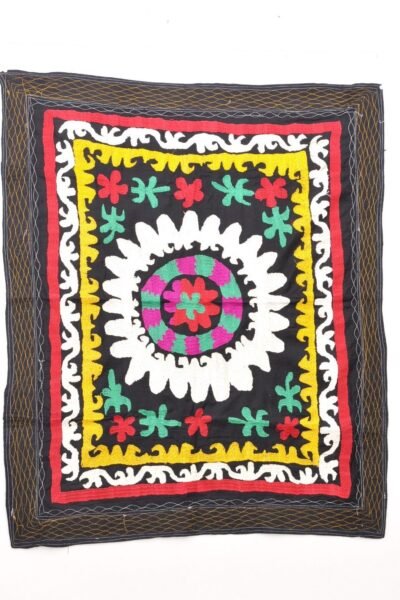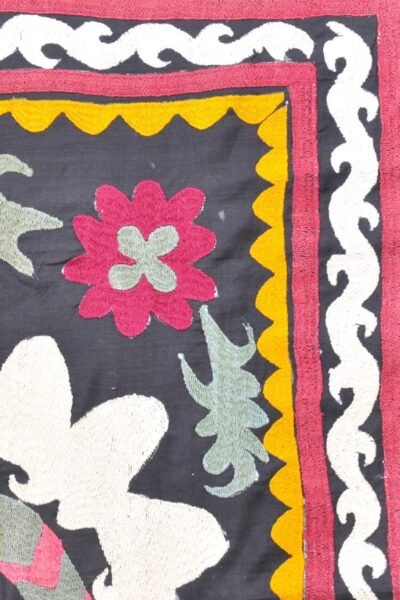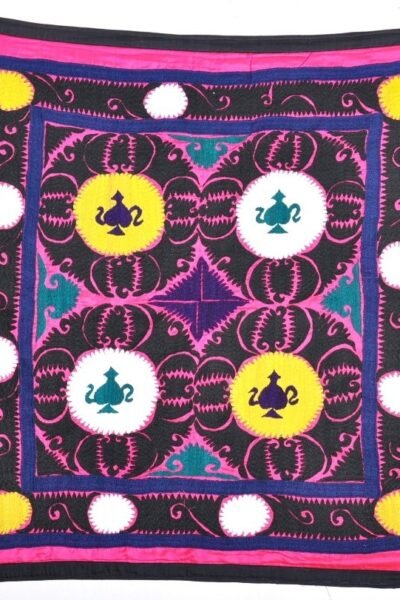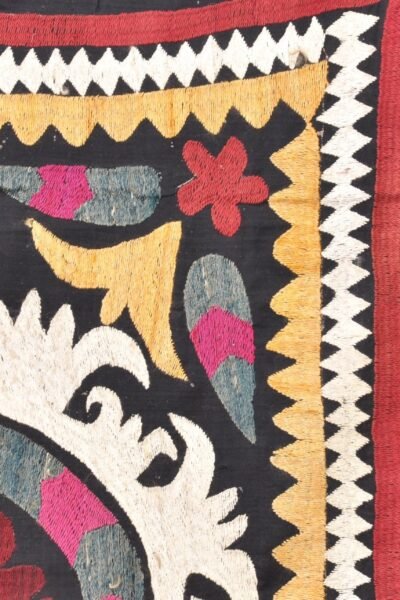Suzani embroidery:
Suzani is more than just beautiful fabric—it’s a centuries-old conversation between generations, told in silk threads and swirling floral motifs. Originating from Uzbekistan and Central Asia, Suzani is an intricate hand-embroidered textile that weaves together tradition, identity, and artistry in every stitch.
Uzbek Suzani Embroidery: A Cultural Legacy in Thread
Suzani embroidery is more than just beautiful fabric—it’s a centuries-old conversation between generations, told in silk threads and swirling floral motifs. Originating from Uzbekistan and Central Asia, Suzani is an intricate hand-embroidered textile that weaves together tradition, identity, and artistry in every stitch.
You’ll often see the term Suzani adorning items like wall hangings, tablecloths, and even runway fashion, but make no mistake—this isn’t just a pretty design. It's a symbol of heritage, a dowry gift, and a living artistic tradition passed down from mother to daughter. From the vibrant bazaars of Samarkand to boutique galleries in Paris and New York, Suzani embroidery has evolved from a private ceremonial art into a globally celebrated textile.
In this blog, we’re diving needle-first into the heart of Uzbek Suzani, exploring its origin, cultural weight, and why it remains such an iconic symbol of artistry in the textile world. Plus, we’ll tell you where you can find real, authentic pieces that support the artisans behind them.
What is Suzani Embroidery?
Let’s start with the name. Suzani comes from the Persian word "Suzan", which translates to “needle.” Quite fitting, don’t you think? It tells you right away that this is an art born from patient hand-stitching and needlework.
Suzani embroidery is crafted using silk or cotton threads, often sewn onto a cotton or silk base fabric. The results are flamboyant, colorful patterns that seem to burst with energy—almost as if they’re alive. Traditionally, it includes repeating motifs like blooming flowers, swirling vines, the sun and moon, or even mythical birds.
Here’s how it’s typically used:
So whether you’re a minimalist looking for a bold accent piece or a collector of heritage crafts, Suzani offers an expressive, story-rich option.
Historical Origins and Cultural Significance
Suzani embroidery has roots that reach far into pre-Islamic Central Asia, yet it truly blossomed between the 18th and 19th centuries in what is now modern-day Uzbekistan. At its core, Uzbek Suzani was a domestic art—women embroidered pieces as part of a bride’s dowry, often beginning years before a wedding.
These textiles weren’t just decorative; they were spiritual. Motifs were chosen for their symbolic meanings:
- Sun and Moon – Represent life and spiritual protection
- Pomegranates – Fertility and abundance
- Tulips and Vines – Growth and beauty
- Mythical Birds – Freedom, strength, or the spirit of ancestors
Each design held deep cultural importance, reflecting not only a family’s aesthetic tastes but also hopes, dreams, and blessings for a new beginning.
What’s fascinating is that these pieces were almost always collaborative works. A mother, daughter, grandmother, and other women in the family or community would work together to complete a single Suzani. In essence, each stitch became a communal legacy.
Even today, original antique Suzanis from Samarkand or Bukhara can be found in museums or prized private collections, treasured not just for their age, but for the stories they carry in thread.
Techniques and Materials
Here’s where the magic happens. What makes Suzani embroidery so distinct isn’t just the patterns—it’s the stitching itself.
Most Common Stitches Used:
- Chain Stitch – Perfect for outlining floral forms.
- Satin Stitch – Used to fill in larger shapes with rich, bold color.
- Buttonhole Stitch – For decorative borders.
- Couching – A technique where threads are laid on the surface and stitched down with smaller threads, adding texture and depth.
Materials:
|
Element |
Description |
|
Base Fabric |
Cotton or silk, traditionally handwoven |
|
Threads |
Silk (for shimmer) or cotton (for matte texture) |
|
Dyes |
Often natural, derived from pomegranate rinds, indigo, or madder root |
Regional Styles:
Each region in Uzbekistan developed its own recognizable Suzani style:
|
Region |
Characteristics |
|
Samarkand |
Large circular medallions, bold colors |
|
Bukhara |
Dense embroidery, symbolic plant motifs |
|
Tashkent |
Lighter colors, more delicate stitching |
|
Shahrisabz |
Vines, birds, and more negative space |
It’s also worth noting that many Suzanis are made in pieces—individual panels are embroidered and then stitched together at the end, often creating charming inconsistencies at the seams that make each one truly one-of-a-kind.
Modern Revival and Global Appeal
Let’s fast-forward to today. You might think a centuries-old embroidery form would’ve been shelved in museums by now, but not Suzani.
There’s been a remarkable global revival in recent years, thanks to interior designers, fashion brands, and cultural conservationists.
Contemporary Use Cases:
- Fashion – Designers like Dries Van Noten have incorporated Suzani in coats and jackets.
- Home Decor – Throw pillows, upholstered furniture, and tapestries.
- Art & Exhibits – Textile galleries and fashion houses now collect and showcase Uzbek Suzani globally.
Why is this happening?
Because Suzani is different. It’s vibrant, meaningful, imperfect in all the right ways—and in today’s world of mass-produced everything, that kind of authenticity is pure gold.
Also, the rise of ethical consumerism has placed spotlight on artisans and slow crafts. Many buyers now want to know the story behind a product, and Uzbek Suzani offers a story that’s rich, romantic, and real.
How to Identify Authentic Uzbek Suzani
Unfortunately, with popularity comes imitation. The market is now flooded with machine-embroidered or printed fabrics pretending to be the real deal. So how do you tell a true Uzbek Suzani from a knockoff?
Here’s what to look for:
Where to Buy and Support Artisans
If you’re ready to add a piece of history to your home—or wardrobe—make sure your purchase supports the actual artisans behind the work.
One of the best platforms to explore is Alesouk.com. This online boutique specializes in authentic handwoven and hand-embroidered Uzbek textiles, and they work directly with artisan families.
Why buy from Alesouk?
- Fair Trade Practices – They ensure artisans are paid fairly for their labor and skill.
- Authenticity Guaranteed – Every product comes with information about its origin.
- Cultural Preservation – Your purchase helps keep ancient traditions alive.
Other places to consider:
Suzani embroidery isn’t just beautiful—it's meaningful. It's the artistry of ancestors sewn into cloth, the patience of hundreds of hours, and the warmth of a gift meant to last a lifetime. It’s Uzbekistan’s gift to the world, and it continues to inspire generations of artisans and admirers alike.
From your grandmother’s chest to your modern minimalist sofa, Uzbek Suzani proves that culture, craftsmanship, and creativity never go out of style.
FAQs
Q1: What makes Suzani embroidery unique compared to other textile traditions?
A1: Suzani’s uniqueness lies in its bold motifs, hand-stitched imperfections, and deep cultural symbolism. Unlike printed fabrics, each Suzani is a labor of love crafted by hand—often by multiple women in a family or community.
Q2: Can I use Suzani fabric for upholstery or curtains?
A2: Absolutely! Just make sure it’s reinforced or lined appropriately, especially for high-use furniture. Many interior designers now use Suzani on ottomans, headboards, and curtain panels.
Q3: How do I care for a Suzani textile?
A3: Keep it out of direct sunlight to preserve natural dyes, avoid washing it in machines, and gently hand-wash or dry clean when needed. If framed, use UV-protective glass.






